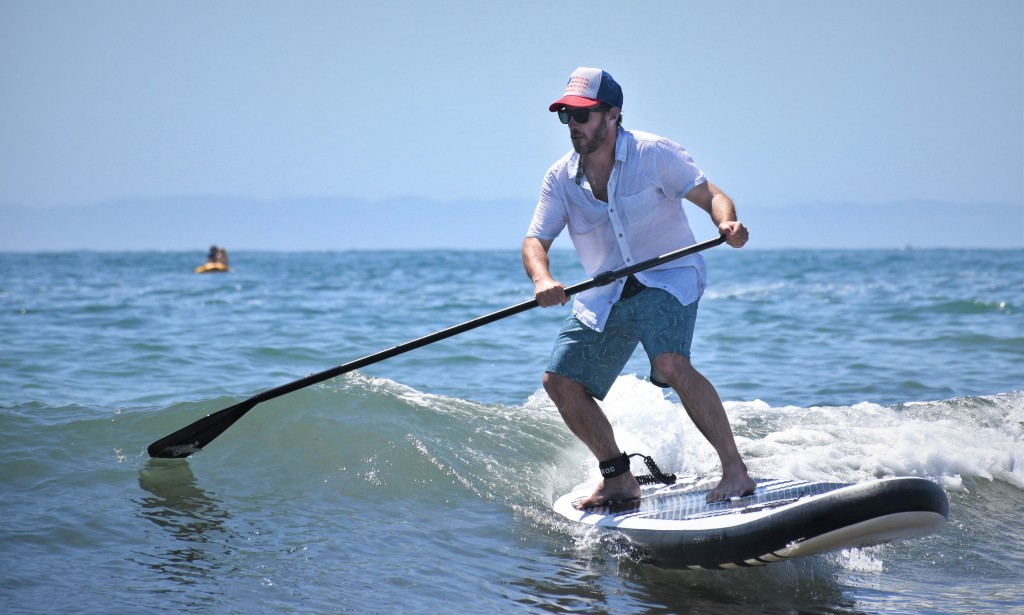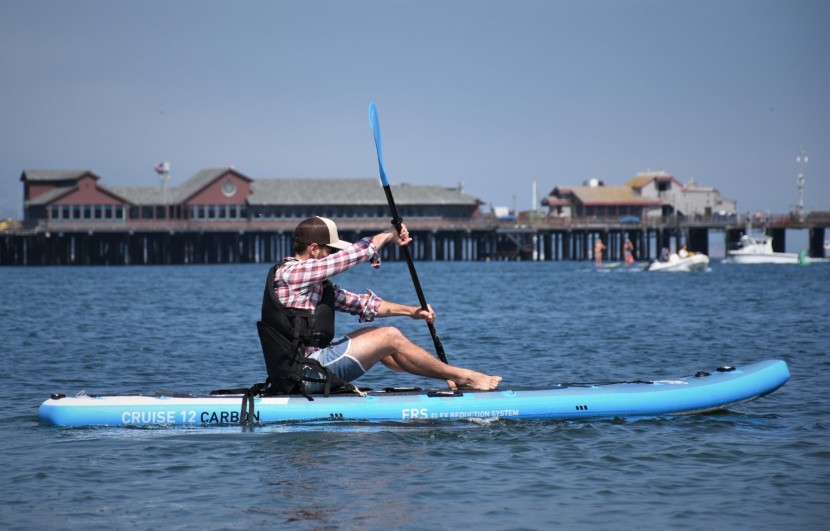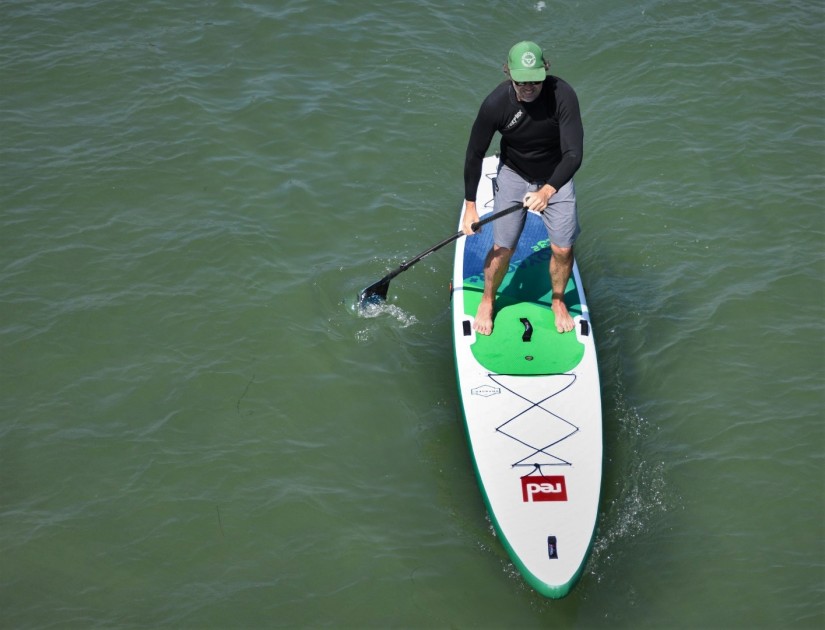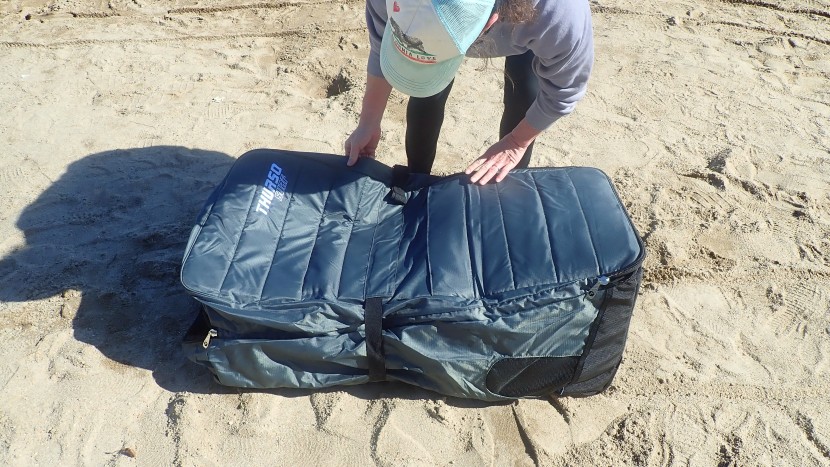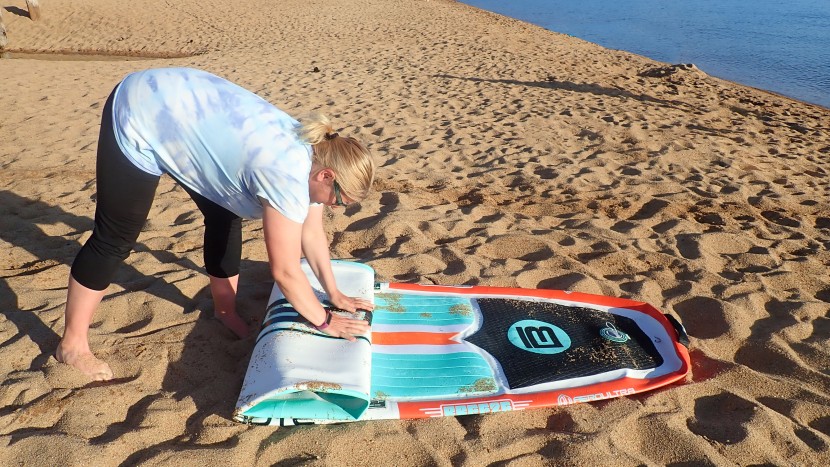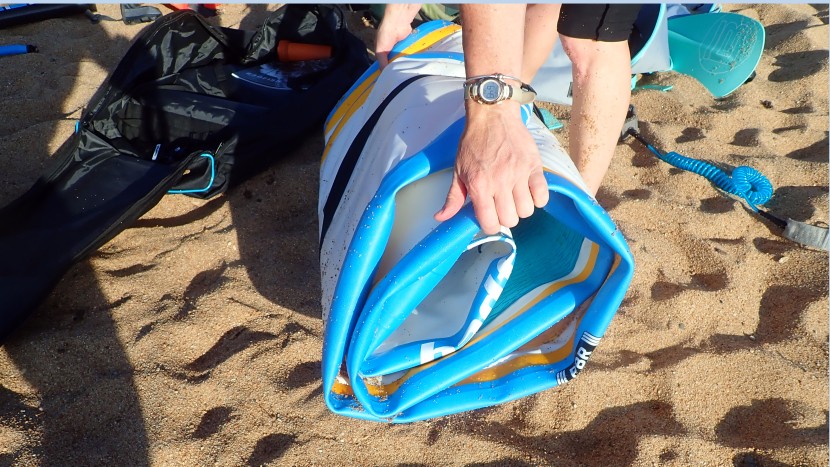Today's inflatable stand-up paddle (SUP) boards are lighter, stiffer, and perform better than ever. While their overall performance isn't quite on par with rigid fiberglass boards, their ease of transport compared to traditional boards provides easier entry into the sport for many new paddlers. Many inflatable models in our lineup include everything you need to get on the water in one convenient package. Each board has a different shape, different level of stiffness and stability, and includes different paddling accessories and transport features, all of which impact the paddling performance or convenience of use. Our testers spent several months unpacking, inflating, paddling, and transporting these boards to identify which model would be the best for you. Below, we break down our testing process and describe each rating metric that we considered.
Stability
The ability to remain upright while floating on an undulating body of water is a key element to successful paddle boarding. While the rider is an active participant and must engage their muscles to promote stability, key features of the board have a strong influence on the paddler's success. We tested each model's inherent stability by using and accessing the board's performance in various settings. We had beginners who had never paddled before or been out less than three times try each model. Intermediate and experienced paddlers rode the boards on choppy water into the wind. We put multiple people on the same board, sometimes with an additional canine companion, and we even attempted yoga postures, including some partner poses, on the different models.
Glide Performance
To assess each board's glide performance, we established a straight course between two fixed points and had the same rider count paddle strokes when the water was flat with a wind forecast ≤ five mph. We then time-tested each model on a measured course with the wind forecast ≤ five mph. During the time trial, we tracked each board's ability to stay true to the course using Strava, a GPS tracking application, to visualize the board's path. We also paddled each board in windier and choppier conditions and assessed how well it managed to stay moving in a straight line without too much correction.
Maneuverability
This metric is all about the ease of turning and avoiding obstacles. Paddler technique can play a pretty big role, but the board's design is also a primary factor. To evaluate the dexterity of each board, we splashed around in a variety of conditions, including around buoys, under piers, and through waves. We also designed a slalom course and had the same rider run a timed test using each board. The course included three 180-degree turns using only forward strokes. We also evaluated each board's turning radius in a 360-degree turn with back paddling and again with forward paddling. We tracked the turn shapes with Strava. The final score for this category was based on the paddler's opinion, the observable results, and the GPS track of each board from the Strava iPhone app.
Ease of Transport
The biggest advantage of inflatable paddle boards over their hard-bodied siblings is the ability to pack them up into small, easily portable packages. To assess the transportability of each model, we packed, unpacked, carried, rolled, and moved the boards over and over again for months. We carried each board in its accompanying backpack over flat terrain, on hiking trails, and cross country to remote alpine lakes. We carried them while inflated from the car to the water and when portaging in rivers. We scored each board based on the comfort and convenience of ferrying them around. We assessed board handles, backpack straps, zippers, pockets, and wheels.
Ease of Inflation
The most challenging part of using an inflatable SUP is filling the board with enough air so that the resulting pressure is sufficient to create a rigid platform on which to ride. To determine which models were the easiest and the most challenging to inflate, we timed inflation from start to finish using the provided hand pumps and with a hand pump/electric-pump combination when provided. We also factored in the overall quality of each pump, the quality of the air hose, and the dependability of the attachment points.
Construction Quality
Inflatable boards are made of soft materials and have seams. While most of the paddling we do to test them is on open waters, we also tested them on creeks and rivers as well as the ocean to evaluate how well they stood up to the sun, rough conditions, and salt water. We always rinsed and dried our boards before deflating and putting them away or storing them inflated in a protected space. Our goal was to evaluate how well the materials and construction hold up over repeated inflations, deflations, and trips to the water.

